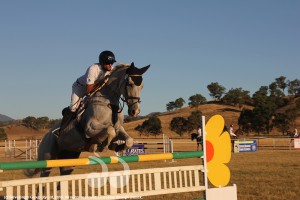Precautions During Show Season
DURING show season horse, cattle, ducks, pigs, sheep and even the odd ostrich are moved around the region to showgrounds.
Dr Jane Bennett, district veterinarian for Hunter Local Land Services reminds all livestock owners to ensure their property identification codes are up to date.
The codes are in place to help protect the regions $1.2 billion agricultural industry from biosecurity threats.
“Local shows and other livestock competitions are increasingly popular pastimes in the Hunter, especially horse events,” Dr Bennett said.
“The chance of a serious disease spreading increases during the show season when livestock are moved between different locations, and stock are congregating in a small, confined area such as the local showground,” said Dr Jane Bennett.
The property identification code (PIC) is part of the National Livestock Identification System (NLIS).
All NSW livestock owners, managers and occupiers of land that carries cattle, sheep, goats, pigs, bison, buffalo, deer, camelids, equines including donkeys, more than 99 poultry, or more than nine emus or ostriches, are required to register for a PIC through Local Land Services, regardless of whether the livestock are moved or not.
“The PIC system allows us to trace where livestock are kept, in what numbers, and trace their movements,” said Dr Bennett.
“This information is vital in the event of a disease outbreak such as horse flu or Hendra virus which could threaten our local and national economy,” she said.
“As more properties are assigned a PIC, we will be able to more easily determine horse population densities in outbreak and at-risk areas to better estimate disease risks and plan control measures,” she said.
“The PIC register also provides a list should we need to contact horse owners in a particular area,” Dr Jane Bennett said.
Dr Bennett said most horse events require some form of Horse Health Declaration which states that the animal has been well in the past few days, with most entries also requesting a record of the PIC.
“Most properties already have a PIC, so they simply need to add the number to entry registrations or other paperwork,” she said.
“This information is an important part of ensuring the health and safety of your horse, and other horses, at an event.
“Taking sensible precautions to prevent disease spread, and cooperating with event organisers in the collection of PIC data will ensure the show tradition continues to thrive in the Hunter,” said Dr Bennett.
To help event organisers apply biosecurity guidelines and risk assessments the Hunter Local Land Services is holding an Event Biosecurity Workshop, in Scone on August 23.
For more information about PICs or stock movements contact your nearest Hunter Local Land Services office or visit www.hunter.lls.nsw.gov.au.
 scone.com.au
scone.com.au